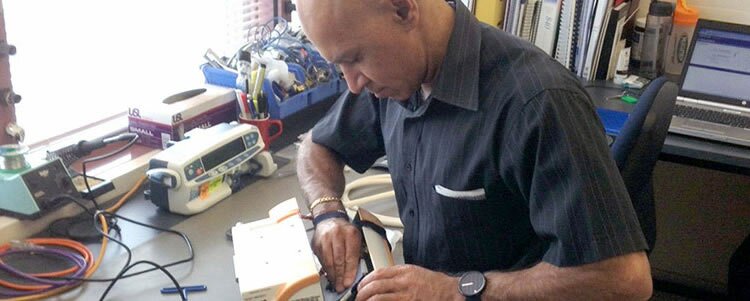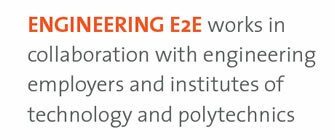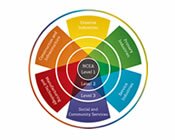INDUSTRY/EDUCATION LINKS CASE STUDY
Industry – Provider collaboration: New Zealand Diploma of Engineering in Clinical Engineering

The Manukau Institute of Technology (MIT), in collaboration with industry, has developed a new engineering qualification – the New Zealand Diploma of Engineering (NZDE) in Clinical Engineering. Read all about it here.
New diploma course proposed for 2015
The Manukau Institute of Technology (MIT), in collaboration with industry, has developed a new engineering qualification – the New Zealand Diploma of Engineering (NZDE) in Clinical Engineering. Students completing a NZDE in Electrical engineering will be able to specialise in Clinical Engineering in their second year. The proposed qualification will be submitted to the New Zealand Board of Engineering Diplomas and, if approved, will be launched in July 2015.
Meeting an industry need
There aren’t enough clinical engineers and technicians in New Zealand, and many of those working here have been recruited from overseas. Others (with a background in electrical or electronic engineering) have come from general industry and been trained on the job, completing their learning through modules from international education providers.
The ongoing shortage of clinical engineering technicians, combined with the rapid development of new medical devices and technologies, has made staff recruitment a real problem. Clinical Engineering Manager Louis Havinga, Counties Manukau Health, says during the past four years he has spent a lot of time recruiting staff but still can’t fill all the vacancies. Speaking to colleagues around the country, he found that they all had difficulty in recruitment and retention and relied on employing staff from the UK, India, South Africa, Europe and the Philippines.
Starting a conversation
Counties Manukau Health and MIT already had a working relationship through the Nursing and Allied Health programme. In 2012, when Louis suggested they discuss the possibility of a clinical engineering course, both organisations were immediately on board. Louis, Mary Waugh, Faculty of Nursing and Health Studies Academic Programme and Course Developer, Neel Pandey, Principal Lecturer at the Electrical Engineering School and others discussed the possibilities and practicalities of running such a course and various ideas for content.
Industry input
Following these discussions, two new groups were formed in 2012: the National Clinical Engineering Advisory Group and the National Clinical Engineering Management Forum (which involved all the Clinical Engineering Managers from District Health Boards (DHB) with clinical engineering services). MIT engaged with these groups, and the group members also engaged with some of the larger private sector medical device manufacturers and suppliers.
More recently, MIT presented to the wider public and private sector at the New Zealand Institute of Healthcare Engineering Conference in Auckland and requested feedback from the attendees. This meant that clinical engineers and others involved in the industry were providing input into the proposed course.
Developing the new course
After considering industry requirements, MIT decided the existing NZDE in Electrical Engineering provided the base for a clinical engineering specialisation. They proposed that the new course should comprise four second-year optional modules and utilise a fifth project module. The proposal was presented to the National Clinical Engineering Management Forum, which approved the concept and suggested additional ideas. Neel notes that the content of the course was largely developed by clinical engineering managers, based on their need and the type of people they employ.
Along with their knowledge of medical technologies, clinical engineers need an understanding of the human body. The MIT Faculty of Nursing and Health Studies delivers an Anatomy and Physiology course which will be adapted to form part of the new qualification. Students will work in laboratories and the clinical simulation suite, a replica hospital ward designed to familiarise students with their working environment.
The proposed course was presented to the wider healthcare engineering community at the New Zealand Industry of Healthcare Engineers conference in November 2014. It was met, Neel says, with a positive response. People in the industry want this initiative to work.
Online delivery
In addition to delivering the course on its Auckland campus, MIT is planning an online course which will be available to anyone, anywhere in the country. A student unable to attend courses at an ITP could do all the theory modules online. Although other ITPs could run their own clinical engineering programme, the availability of an online course means they could instead enrol students in their own NZDE in Electrical Engineering programme, then have them do the clinical engineering specialisation online.
The practical component of the course would be completed at a District Health Board. Clinical engineering managers discussed this aspect of the course and decided that they should bring students into their workshops for experience with the machines and other technologies.
MIT is also planning block courses. Students who can’t easily get to a DHB will be able to use the facilities at Middlemore Hospital, for example during term breaks. Mary notes the importance of teaching anatomy and physiology in context, given that students aren’t likely to be coming in with knowledge or experience in health care.
Comment from a clinical engineering manager
Clinical Engineering Manager Michael Maurer, Capital & Coast DHB, is enthusiastic about the proposed qualification. As chair of the National Clinical Engineering Advisory Group he has been involved in the DHBs’ response to a new clinical engineering diploma. Currently, Michael tries to recruit NZDE in Electrical Engineering graduates but can’t get all he needs. The technicians, he says, are good electrical engineers, “But our challenge is to bring them up to speed in physiology and pathology. They can repair a ventilator, but they don’t know the physiology behind it.”
Michael faces the need for even more clinical engineering technicians over the next four years. “The people in the new programme will be snapped up by the DHBs and the biomedical industry.”
Employment prospects for clinical engineering graduates are good
With the current demand for clinical engineering technicians in both DHBs and the private sector, employment prospects for clinical engineering graduates are good. And if the market should change in the future, the graduates can still fall back on their base – electrical engineering – to work in other electrical and electronics-related industries. However, with the continued advances in technologies, and because clinical engineering and biomedical engineering are both young and evolving disciplines, the future could include more specialisations. The team has already considered potential opportunities if the NZDE proves successful, such as a Bachelor of Engineering Technology in Clinical Engineering, or a Postgraduate Diploma in Health Technology Management.
Promoting the course
MIT has held off promoting the new qualification until it is formally approved, but looks to target its first-year electrical engineering students and to market the course in schools as another engineering option. This complements Counties Manukau Health’s drive to attract school leavers into health care careers. It has a working relationship with Pasifika groups in South Auckland who have indicated an interest in steering Pasifika students into the NZDE in clinical engineering. The course was also promoted to the National Kidney Foundation Samoa as a programme to upskill and empower their technical staff.
Our thanks to everyone for their time and advice. If you have any questions, please get in touch: .
November 2014
 |
 |
 |
||
 |
||||
 |
||||
 |






